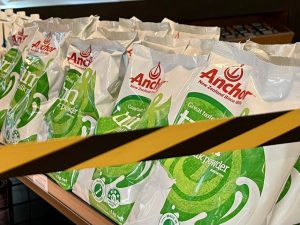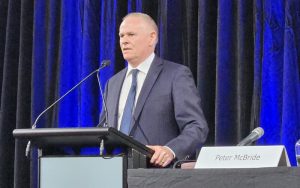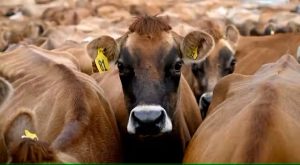
OPINION: New Zealand’s dairy exports have been the backbone of the country’s economy for several decades, and exports remain buoyant despite pandemic-era disruptions and impending downturns in East Asia in the next few years.
Yes, duty-free access to China has helped and will continue to, but with impending demographic challenges in that market, and worsening conditions in Japan and elsewhere, what does that mean for the country’s future exports?
But still, with this battle out of the way for the moment and producers breathing a sigh of relief, farms and dairy producers across New Zealand have several more hurdles potentially on the horizon. Namely, new trad deals as global shipping routes continue to bounce back from the Covid-19 era.
Still, potential new free trade agreements (FTAs) with other emerging markets remain on the horizon. Earlier in August, Overseas Trade Minister Todd McClay said the current Government is “pulling out all the stops” to get a trade deal with India done. This bodes well for NZ Inc. in general but particularly the dairy industry as growing Western eating habits continue to develop in that market, increasing the need for dairy products.
Following the NZ-Chinese FTA more than 15 years ago, understandably New Zealand has placed considerable focus on boosting its relationships with New Delhi. It makes sene, with a population of 1.4 billion, although maturing, the sheer size of the Indian market could potentially sweep up Chinese and other East Asian exports in the next decade which are expected to decline if current demographic trends remain on track.
“But while there, I made the case again that whenever NZ does a trade deal, we are often much smaller than our partner,” McClay said. He said the development to boost trade relations with the large Asian market is backed up by previous agreements developed by both countries dating back to 2011.
Former Prime Minister John Key said at the time (MFAT) that, “This is the first of what will be many NZ Inc. country and regional strategies that will set ambitious medium-term goals and provide a clear direction for the whole of government effort over a five-year period,” adding, “Our relationship with India has always been friendly and warm, and we have seen good growth over the past few years. Two-way trade is worth more than $1.2 billion per year, and India has become our third-largest source of international students and our 10th largest source of visitors”.
As the agreement from the 2011-era document states, the core aim of that move was a free trade agreement (FTA) in the coming years. That has not panned out as successive governments would or could have hoped for, simply that as the target of trade of $1 billion a year has been missed successively each year, to even seeing trade dip, respectively over time.
Another key hurdle of getting over the issue of a semi-protectionist Indian market is the average high tariffs. Whole milk powder has an average 15% import duty levied on it, while finished cheese products have a basic customs duty of 40%; overall, the average duty levied on imports currently is around 33%, adding a layer of complexity to already tense negotiations between Wellington and New Delhi.
India, which has a comparable domestic dairy industry complex, may see little point in the development of dairy ties with NZ but, long term, as McClay points out, the relationship between the two countries. The current state of New Zealand-India relations suggests that three years is an overly optimistic timeframe for concluding a comprehensive trade deal. Moreover, recent rulings by the Intellectual Property Office of New Zealand (IPONZ) on the copyright of Basmati rice may dent further hopes to win over New Delhi.
The Indian Government’s fierce protection of its domestic dairy industry, as evidenced by its exclusion from the early-stage deal with Australia, presents a formidable challenge. McClay’s reluctance to discuss potential concessions publicly is understandable, but it also hints at the difficult compromises that may lie ahead.
While the Government’s enthusiasm for engaging with India is laudable, it must temper its optimism with a dose of realism. Negotiating a comprehensive trade deal with India in just three years is a Herculean task, especially given the history of stalled talks and the complex economic interests at play.
Daniel Rad is a rural and geopolitical studies expert based in the UK.
You can now read the most important #news on #eDairyNews #Whatsapp channels!!!
🇺🇸 eDairy News INGLÊS: https://whatsapp.com/channel/0029VaKsjzGDTkJyIN6hcP1K

























